Karolinska Comes Calling: A Conversation with Harriet Wallberg-Henriksson
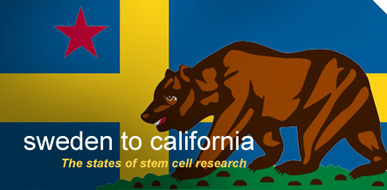
Sweden's Karolinska Institute, already well known for awarding the Nobel Prize in Physiology or Medicine — three of which have gone to UCSF scientists — has set an ambitious goal for itself: Namely, it hopes to become the leading medical university in Europe by 2010.
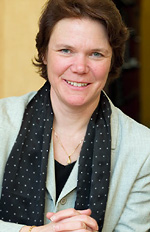
Harriet Wallberg-Henriksson
International collaborations are one way to get there and, with that in mind, a team of Karolinska stem cell scientists recently visited their counterparts at UCSF to discuss a planned research partnership. Joining them was the Karolinska Institute's first woman president in 200 years, Harriet Wallberg-Henriksson.
Wallberg-Henriksson, a respected MD-PhD particularly interested in combating diabetes, initiated the formal trip after a visit to UCSF six months ago, prompted in part by UCSF's reputation as a stem cell research giant. Wallberg-Henriksson sat down with me during her visit to discuss what's on her mind midway through her six-year term as president at one of Europe's most prestigious universities.
- Q. How important are international collaborations to the Karolinska Institute?
- A. International collaborations are not only important; they are necessary. Even though there are 354 professors at Karolinska, 4,000 employees and 2,000 PhD students, there is no way we can have all the techniques and all the knowledge. Some things are done better in other places. We need to identify those places and combine the best in both. As it is right now, 60 percent of our publications are done with people outside the Karolinska Institute, which is a very good thing.
- Q. When you considered potential stem cell collaborators, did you consider other institutions in the US?
- A. No. I knew UCSF was doing very well with its stem cell research, and stem cell research is also a profile area at Karolinska. In Sweden, we have liberal legislation that allows us to use government money for research into embryonic stem cells, and California is very actively pursuing this, as well. But there are limiting factors to our research. Karolinska is sitting with some cell lines and UCSF is sitting with some cell lines. We both need a bigger pool of cell lines that can be characterized and compared much more systematically than we have done to date. We also have a lot of similarities with UCSF. We are a university dedicated to health. And we are building something new, like your Mission Bay, near our campus as part of a government, university and industry collaboration. It's called Science City and will be a very huge site for biomedicine and biotechnology.
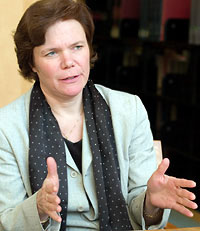
- Q. Are there any obvious dissimilarities between the conduct of science in the US and Sweden?
- A. There has been more government support of science in the US. Americans also are more inclined to accept competition, put their heads down, and really think and work very hard. This is something we look upon with a little envy.
- Q. Money is always a limiting factor in science. How is science funded at the Karolinska?
- A. Half of our funding comes from the government and the other half from industry, patient organizations, the European Union and other external sources. Sweden has no history of private philanthropy, so we are trying to persuade the government that we need a tax deduction for private donations. It seems likely that they will change the legislation to make this possible. That would be very dramatic for us because if we want to reach this vision of being the leading medical university in Europe, we simply have to have more money coming into the system.
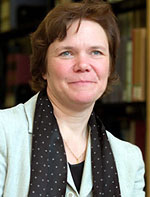
- Q. Unlike the US, I know that in Sweden scientists own their own intellectual property. How does that affect the commercialization of science at the Karolinska Institute?
- A. Karolinska cannot make a profit. But a holding company can. Our holding company is called Karolinska Institute Innovations, which screens all ideas that come from scientists and judges if they are possible to commercialize. If it passes, we take on this idea and this scientist. The whole innovation system now has three venture capital companies, legal help, [guidance from former industry officers,] people who help with business plans, office space and administrative space. We have started up about 45 biotech companies so far. Because of the intellectual property rules, I have to make sure that when the Karolinska scientists go into the system, we write an agreement that says we have a 50-50 share. I can see that in just a few more years, we will get our cut because some of these companies have grown and eventually will be sold for millions and millions of dollars.
- Q. Is it true that 25 percent of the physicians at the Karolinska Institute also have a PhD?
- A. Yes, it's a Scandinavian and Swedish tradition. [The Journal of the American Medical Association estimates that in the United States, by contrast, the percentage of physicians engaged in research has declined steadily from a peak of 4.6 percent in 1985 to a level of 1.8 percent in 2003, both because the pool of physicians in practice has grown and because the number of physician-scientists has declined.] In the US, you can work as an MD and make more money than a scientist. In Sweden, the difference has not been so big, at least until recently. For that reason, it was attractive to pursue both an MD and a PhD because you needed it to pursue a clinical career and be the head of a clinic, for example. That's not true today, and we are a little bit worried about the effect of that on students in their preclinical years.
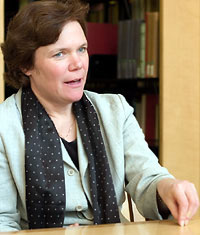
- Q. What kind of effect do you anticipate?
- A. We used to have a lot of medical school professors with an MD who, when they were teaching histology or basic biochemistry, could put the information in the perspective of patients. Now we have very, very few with that background at the preclinical level. [What you have instead are] people who only have molecular biology or biochemistry. They can teach those things, but they can't [teach from] the patient perspective. Students then sit there thinking, Why on earth do we need to know this? It doesn't have anything to do with people who have asthma or diabetes. It probably does, of course, but the professor cannot explain why. This is a problem for our future, when people will be treated by doctors and nurses who have not had that proper education from the patient perspective. We have to make [the MD-PhD career] more attractive.
- Q. With your duties as president, do you have any time to do research?
- A. I desperately try to keep in touch with my field a tiny bit so that I have something to go back to. I love science so much. I love seeing a patient and seeing a problem for which we really don't have a treatment or solution, and then go back to my lab and design a study that might solve it. That's what I really like.
- Q. With that in mind, do you plan to stay on as president past your six-year term?
- A. I'm halfway through now, and we have a three-year plus three-year option. Nowadays, staying on for 12 years is a sign of bad judgment. Six or nine years is optimal, so that's what I plan to do.
Photos/Majed
Alternative content
Related Links
- Karolinska Institutet
- Karolinska Investment Fund
- Karolinksa Institutet Science Park
- The physician-scientist career pipeline in 2005
- JAMA. 2005;294:1343-1351